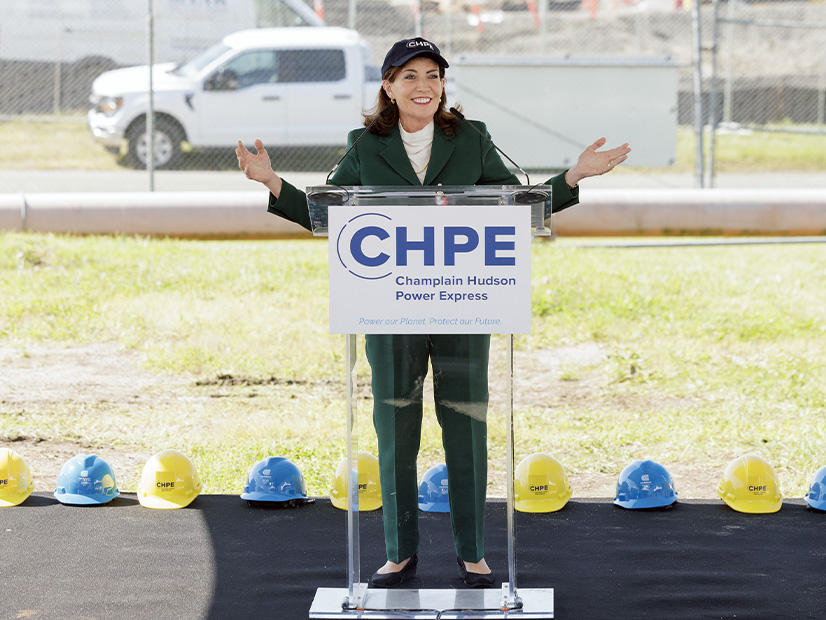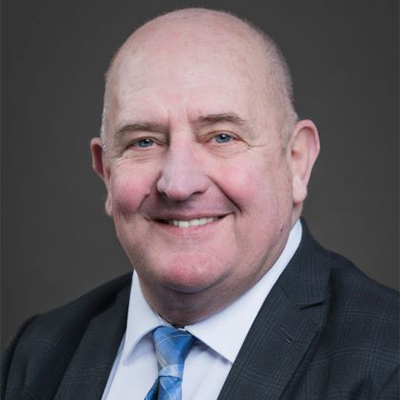Two key pieces of New York City’s clean energy future are taking shape along the East River waterfront.
The converter station for the Champlain Hudson Power Express and the Brooklyn Clean Energy Hub both hosted ceremonial ground-breaking ceremonies in the past week.
Both will play an important role in keeping the lights on in the city, but the need is more pressing for the CHPE facility in the Astoria neighborhood of Queens. NYISO has warned that further delays in the transmission project could worsen the reliability margin deficit the city faces starting in 2025.
Gov. Kathy Hochul (D), U.S. Department of Energy Deputy Secretary David Turk, Premier of Quebec Francois Legault and dozens of other officials gathered Tuesday to mark the start of work on the project.
CHPE is a 339-mile underwater and underground HVDC line that will carry up to 1,250 MW of power generated by Quebec hydropower plants to New York City. After more than a decade of planning and review, construction of the line began early this year.
Now, work has begun on the converter, which will occupy a former fossil fuel site. Six tanks that once held 12 million gallons of No. 6 oil were removed in the weeks before Tuesday’s event, along with nearly four miles of piping.
Hochul said in a news release: “The transformation of a fossil fuel site into a zero-emission facility highlights the world of possibilities we have to reduce our dependence on fossil fuels, mitigate the impact of climate change and accelerate our collective progress of shifting our power grid to go green.”
CHPE also will move New York state closer to its 2030 goal of 70% renewable power generation and will help fill the gap created by the mandated peaker plant retirements that NYISO has warned will create a deficit.
“The importance of the Champlain Hudson Power Express project to maintaining grid reliability and enabling the transition to the grid of the future cannot be overstated,” NYISO President Richard Dewey said in a news release. “By delivering 1,250 megawatts of clean, renewable hydropower to the New York City metro area, this project plays a key role in the move to electrify the economy and meet the state’s ambitious clean energy goals.”
Seven miles south, in Brooklyn’s Vinegar Hill neighborhood, Con Edison broke ground Sept. 12 on its Clean Energy Hub.
The facility eventually could serve as the interconnection point for up to 1,500 MW of the 9 GW of offshore wind power that New York state hopes to have online by 2035.
But there already is a pressing need for the Clean Energy Hub as a means of maintaining reliability, because the surrounding area is placing greater demand on the grid with electrification of buildings and transportation.
Con Edison expects demand in certain neighborhoods to exceed the existing infrastructure’s capacity by 2028.
“The Brooklyn Clean Energy Hub represents a major milestone in the clean energy transition and will strengthen our grid’s reliability,” Con Ed CEO Tim Cawley said in a news release. “This project will offer a critical plug-in point to connect with offshore wind, while creating good jobs, supporting economic growth and advancing New York’s climate goals.”
The CHPE station stands in an area with multiple fossil-fired generating stations and resulting poor air quality. Con Ed’s Hub also occupies the site of a former fossil-fire facility.
Neighborhood activists cheered the conversions.
Costa Constantinides, CEO of Variety Boys and Girls Club of Queens, said: “Today is a great day for the energy transition away from fossil fuels here in Astoria. For too long our community has borne the brunt of fossil fuel production and the health impacts that have turned our neighborhood into ‘Asthma Alley.’”

